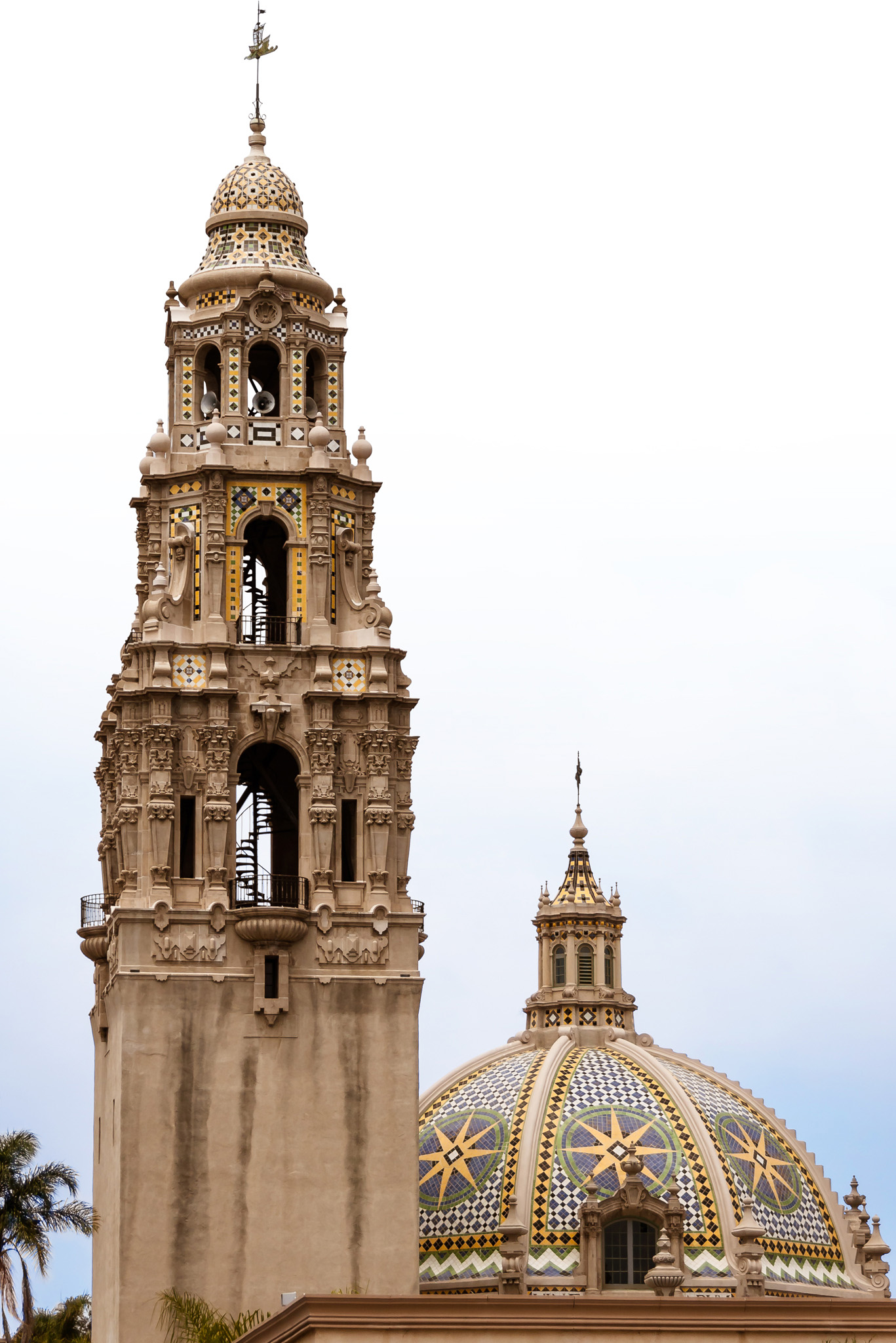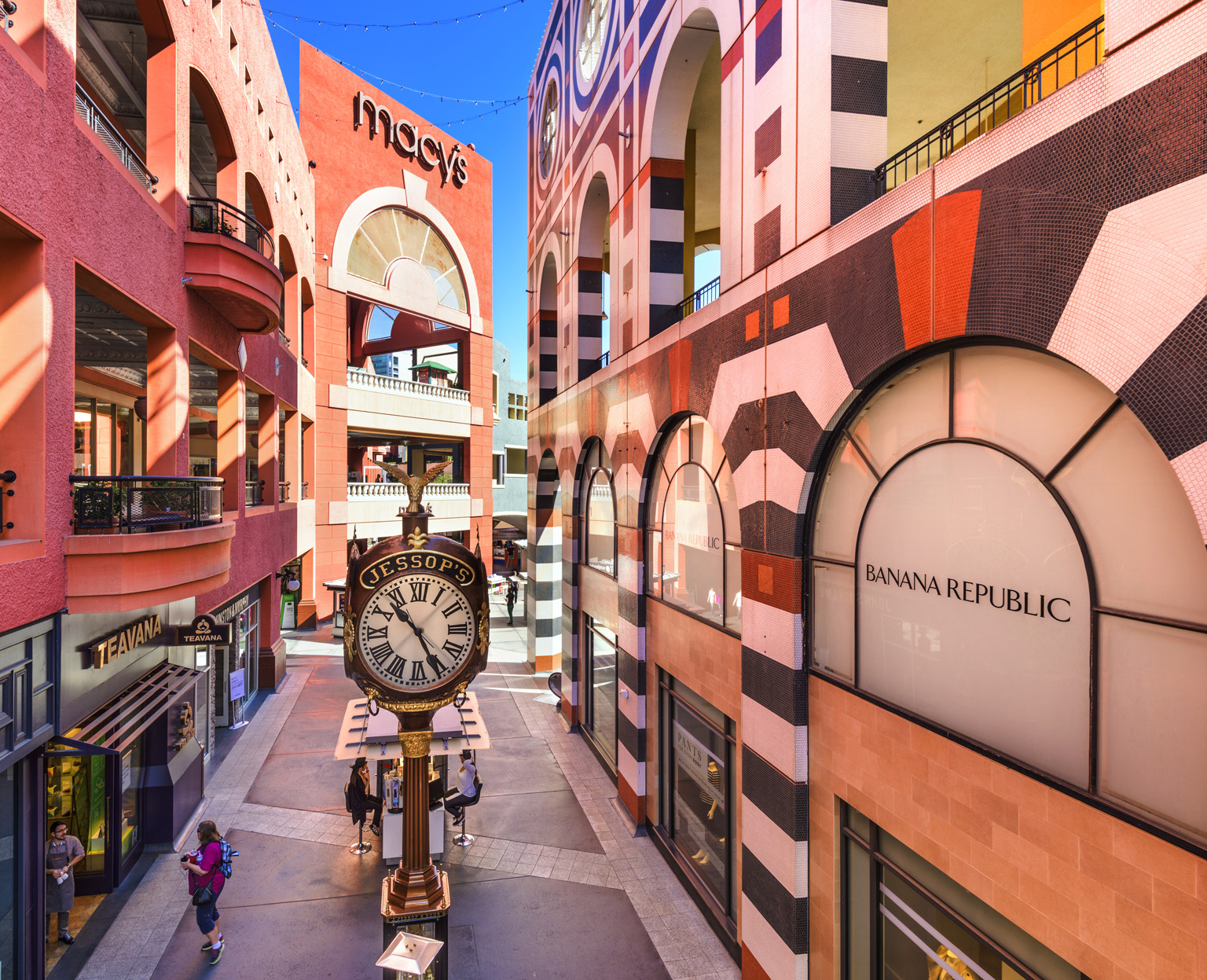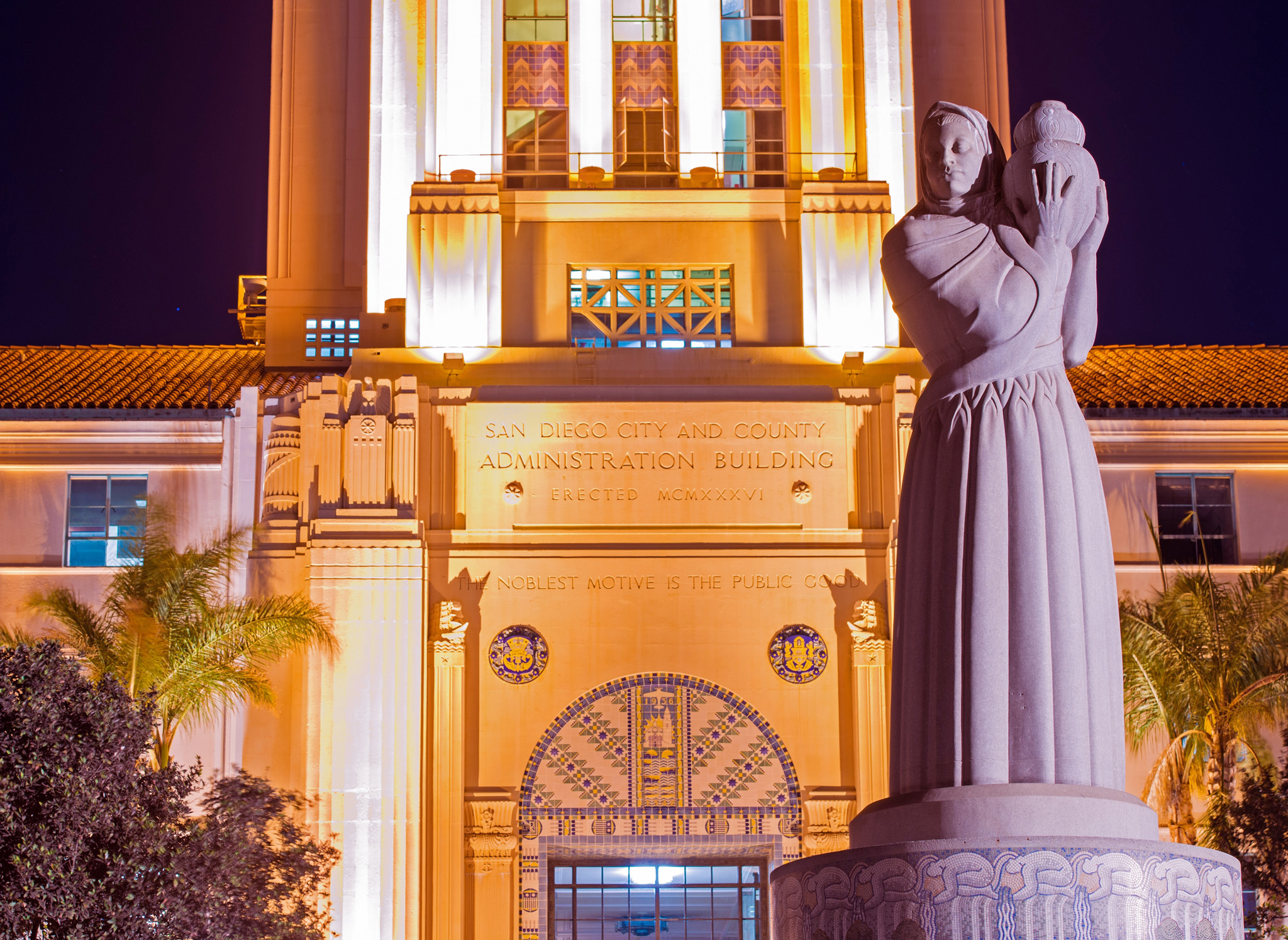ARCHITECTURAL HIGHLIGHTS
1. San Diego County Administration Center
![]() 1600 Pacific Hwy • Open 8am–5pm Mon–Fri
1600 Pacific Hwy • Open 8am–5pm Mon–Fri
Four architects responsible for San Diego’s look collaborated on this civic landmark. What began as a Spanish-Colonial design evolved into a more “Moderne” 1930s style with intricate Spanish tile work and plaster moldings on the tower.
2. Louis Bank of Commerce
Builders of the Hotel del Coronado, the Reid brothers can also take credit for one of the architectural treasures of the Gaslamp Quarter: a stately, four-story twin-towered Victorian structure (see Louis Bank of Commerce). Built in 1888, it was San Diego’s first granite building. Of special merit are the ornate bay windows that project from the facade.
3. California Tower and Dome
Bertram Goodhue designed this San Diego landmark for the Panama-California Exposition of 1915–16, using Spanish Plateresque, Baroque, and Rococo details. The geometric tile dome imitates Moorish ceramic work often seen in southern Spain. An iron weather vane in the shape of a Spanish ship tops the 200-ft (61-m) tower.

California Tower and Dome
4. Mormon Temple
![]() 7474 Charmant Dr, La Jolla
7474 Charmant Dr, La Jolla
The temple of the Church of the Latter Day Saints is an ornate, futuristic structure. The golden trumpet-playing angel, Moroni, crowns one of the towers and points the way to Salt Lake City. Interiors are closed to the public.

The Mormon Temple lit up at night
5. Hotel del Coronado
Designed by James and Merritt Reid in 1887, this hotel was once the largest in the country to be built entirely of wood. Advanced for its time, the hotel had running bathroom water and telephones, as well as a birdcage elevator.
6. Salk Institute
![]() 10010 N. Torrey Pines Rd • 858 453 4100 • Open 8am–5:30pm Mon–Fri • Guided tours: noon Mon, Wed & Fri; adm • www.salk.edu
10010 N. Torrey Pines Rd • 858 453 4100 • Open 8am–5:30pm Mon–Fri • Guided tours: noon Mon, Wed & Fri; adm • www.salk.edu
At one of the most famous buildings in San Diego (see Salk Institute), twin six-story laboratories comprised of teak panels, concrete and glass stand across from each other, separated by a marble courtyard with a channel of water in the middle. Note architect Louis Kahn’s use of “interstitial” space: mechanical devices between floors can change laboratory configurations.
7. El Cortez
![]() 702 Ash St
702 Ash St
This landmark was once the tallest building and most famous hotel in downtown San Diego. A glass elevator once led to the romantic Sky Room. Ornate Spanish details decorate the reinforced concrete structure, which is now a private condo building.
8. Geisel Library
![]() UCSD
UCSD
Named for famed children’s author, Dr. Seuss, and designed by William Pereira, the library at UCSD has tiers of glass walls supported by reinforced concrete cantilevers. Filmmakers have used it as a backdrop for sci-fi shows.
9. Westfield Horton Plaza
Inside Westfield Horton Plaza is a wonderful hodgepodge of bridges and ramped walkways connecting six staggered levels, embellished with towers and cupolas. Its distinctive sherbet color scheme has been copied on many renovation projects throughout San Diego.

Clock at the Westfield Horton Plaza
10. Cabrillo Bridge
Built as an entryway to the 1915–16 Panama-California Exposition, this cantilevered and multiple-arched bridge has a 1,500-ft (457-m) span. The best view of the bridge, especially during Christmas, is from the 163 Freeway below.
TOP 10 PUBLIC ART SIGHTS
1. Guardian of Water
A 23-ft (70-m) high granite sculpture depicts a pioneer woman.

Guardian of Water sculpture
2. Westfield Horton Plaza Fountain
Flowing water and electric lights were technological breakthroughs in 1909. Plaques honor city notables.
3. Tunaman’s Memorial
A bronze sculpture of three tunamen casting their lines.
4. Magic Carpet Ride
The “Cardiff Kook” surfer statue is often elaborately decorated by pranksters.
5. The Cat in the Hat
The Cat in the Hat looks over Dr. Seuss’ shoulder in this bronze sculpture.
6. Surfhenge
![]() Imperial Beach Pier
Imperial Beach Pier
Surfboards pay tribute to the surf gods.
7. Woman of Tehuantepec
![]() House of Hospitality
House of Hospitality
A 1,200-lb (544-kg) piece of limestone is sculpted into an Aztec woman.
8. Sun God
A fiberglass bird stretches its wings atop a 15-ft (5-m) concrete arch.
9. Paper Vortex
![]() San Diego International Airport
San Diego International Airport
A paper airplane is artfully transformed into an origami crane.
10. Homecoming
![]() Navy Pier, Harbor Drive
Navy Pier, Harbor Drive
A bronze sculpture depicts a sailor and his family in a homecoming embrace.
